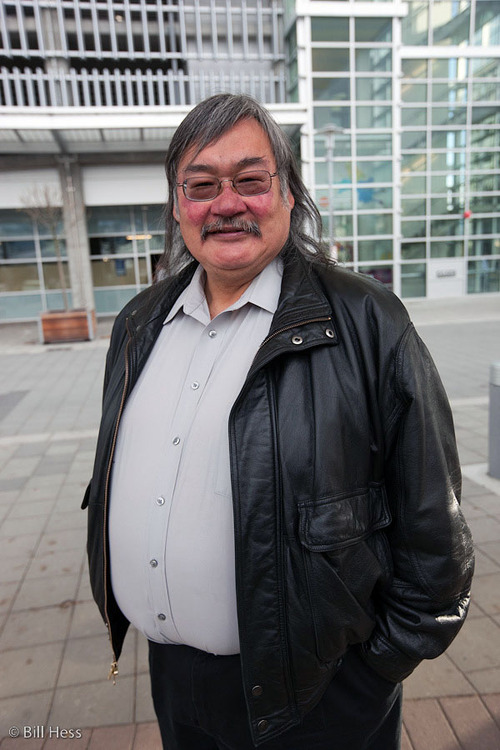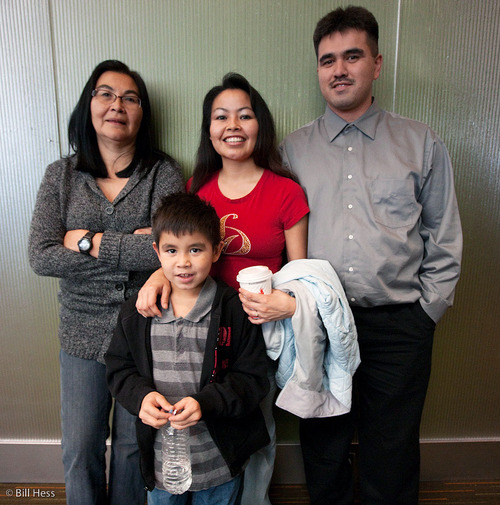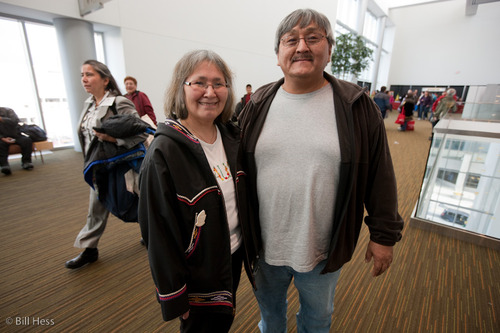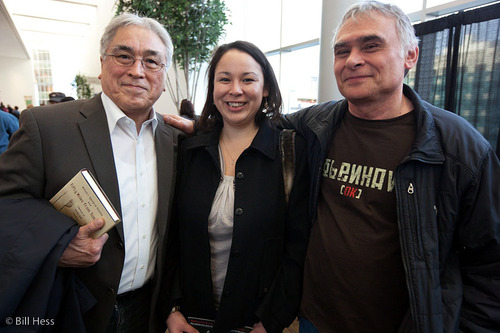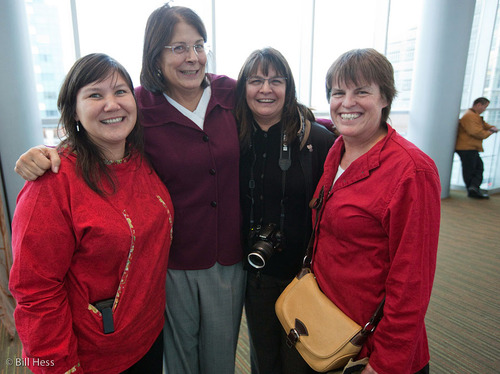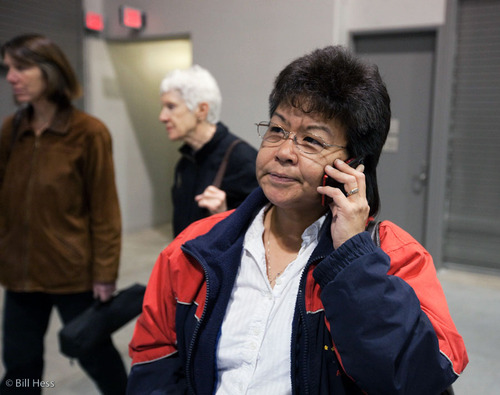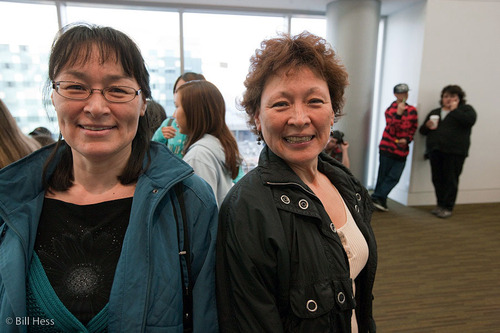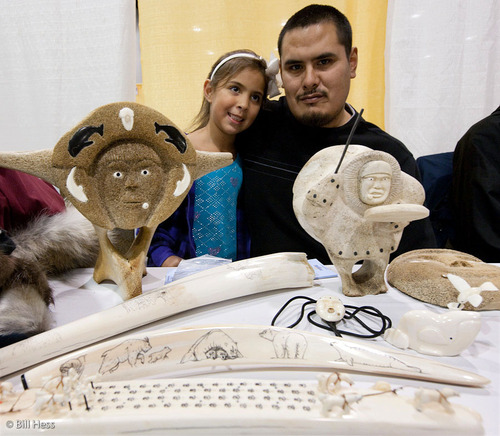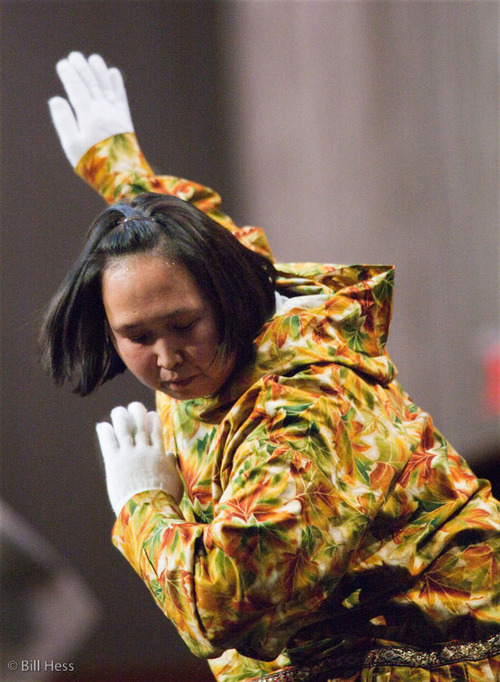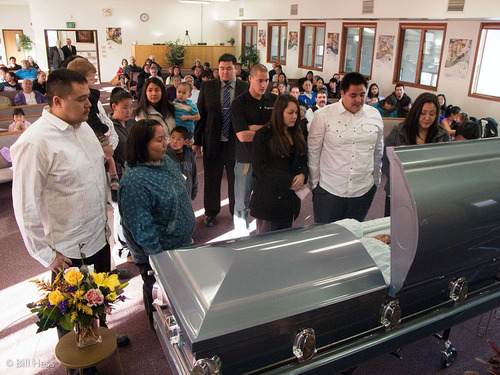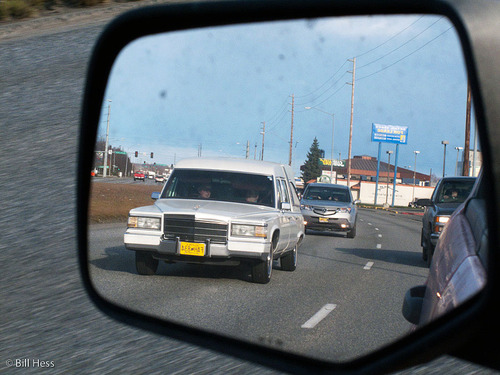Wandering about AFN, Part 7, final: More faces; I end at a memorial for a strong woman
 Friday, October 30, 2009 at 4:01AM
Friday, October 30, 2009 at 4:01AM The AFN Convention began one week ago yesterday and ended one week ago tomorrow, so, as fun as this has been for me, I think I had better wrap it up. I begin the close with Willie Kasayulie of Akiachak. Thanks to Ada Deer, a Menominee who served as head of the Bureau of Indian Affairs under President Bill Clinton, 229 tribes in Alaska now enjoy federal recognition, but in the early 1980's, many argued that ANCSA had rendered tribal government null and void in Alaska.
Kasayulie was President of Akiachak's tribal government, formed under the provisions of the Indian Reorganization Act of 1934 and neither he, the tribal council or the village elders believed this. They saw their tribal government as the legitimate voice of the people of their village.
So they dissolved their city government and moved all of its functions under the tribe. The move was extremely controversial, even within the Native community, but Akiachak did it and they succeeded.
The woman at left is Carolyn Nora David, daughter of Katie John and the wife of Charles David, who I earlier introduced as the man who witnessed as I crashed my plane just outside the village of Mentasta. Standing next to her is Shawn Sanford, Jr. with his mother, Crystal and father, Shawn Sanford, Sr.
The reason that I had flown to Mentasta in the first place was to attend the victory celebration for Katie John, after then Governor Tony Knowles, following a period of long debate, uncertainty and a trip to Katie John's fishwheel at Batzulnetas on the Copper River, dropped the State's court case against her right to subsistence fish under federal jurisdiction and did not appeal to the US Supreme Court.
Even though I crashed my plane, I still covered the celebration.
Katie is well into her nineties, now. Although she did not come to Anchorage, Nora says she is doing well.
Paul Kignak Jr. and wife Kate, of Barrow.
Aqqaluk Lynge, left, traveled all the way from Greenland to attend the AFN Convention, on behalf of the Inuit Circumpolar Council. Lynge is President of ICC Greenland and delivered an address to AFN. Next to him stands Kelly Eningowuk, the Executive Director of ICC Alaska. Jim Stotts of Barrow is the acting Chair of ICC.
The last General Assembly of ICC was held in Barrow in the summer of 2005 and the next is scheduled for July, 2010, in Nuuk, Greenland. I cannot promise that I will be there, but I hope that I will and I think the odds are fairly good.
Eben Hopson, the first Mayor of the North Slope Borough, was never happy with the fact the Inuit people, spread from the Russian Far East, across Alaska and Canada and Greenland were separated by international boundaries.
And so he set in motion the movement that led to the first General Assembly of ICC, then known as the Inuit Circumpolar Conference, in Barrow in 1977. The organization seeks not only to strengthen ties between the Inuit of all four nations, but also to advance Inuit and indigenous causes world wide, including in the United Nations.
The tall lady second from left is Julie Kitka, Tlingit, who is President of the Alaska Federation of Natives and the person upon whom the responsibility of organizing the convention falls most heavily. At left is Valerie Davidson, originally of Bethel, who has earned her law degree and now works at the Southcentral Foundation in Anchorage.
Yesterday, I introduced Sylvia Lange of Barrow. Standing next to her is Marla Berg who carries North Slope Borough issues to Juneau and Washington, DC.
Colleen Akpikleman, from the North Slope Borough Mayor's Office.
Ellen Frantz and Martha Brower, both of Barrow.
Christopher Kalerak of Elim, artist, and his daughter.
Merlin Koonooka of Gambell on St. Lawrence Island, who I once followed on a seal hunt. I am sorry, but I have forgotten the name of the woman who stands next to him.
Iqaluk Nayakik, Kuugmiut Dancers, Wainwright.
On Saturday, I headed into Anchorage with plans to attend the final hours of the AFN convention, which was scheduled to adjourn at 3:00 PM. First, I stopped at the Anchorage Native Assembly of God chapel to attend a memorial for Bernice Tagarook, a respected Elder from Wainwright who had passed away at the Alaska Native Medical Center.
It is common in Alaska to have a memorial in Anchorage before the person is flown back to their village for the funeral and burial. Because of AFN, many people were in town and were able to attend the memorial.
Bernice always greeted me in Wainwright with warmth and friendship, but the memory that I have of her that I think speaks most strongly to her strength of character took place in the village of Atqasuk.
Her daughter, Bernadine, had married into that village and I, who, I stress again, am not a wedding photographer, happened to be there at the time and so I photographed the wedding. Several years later, I happened to return to Atqasuk on the very day that Bernadine died of cancer.
So I attended the funeral, and after the burial, during one of the most hard and painful events of her life, Bernice invited me to sit with her, in the midst of many crosses and grave markers. It was she who found the strength to smile, even to laugh, and to give comfort to those others who mourned all around her.
Here, her grandchildren that were present in Anchorage step to her casket before it is closed for the service.
I never made it to the convention on Saturday, because I did not leave Bernice's memorial until well after 2:00 PM. I then headed over to the Bishop's Attic, an Anchorage thrift store, to meet my daughter Melanie so that we could figure out where to meet Lisa for lunch.
After we decided where to go, I drove back out onto the Seward Highway, looked into my mirror and was surprised to see the hearse that Bernice now rode in. It was the first leg of her final journey back to Wainwright.
I could not help but think of these lines from the Carter Family, accompanied by the great Johnny Cash:
I was standing by my window,
On one cold and cloudy day
When I saw that hearse come rolling
For to carry my mother away...
Well I told that undertaker,
Undertaker please drive slow
For this lady you are hauling
Lord, I hate to see her go!
Will the circle be unbroken
By and by, Lord, by and by?
There’s a better home a-waiting
In the sky, Lord, in the sky!
When you think about it, that's really what the people are doing when they get together - the youth and the Elders, the leaders and the onlookers - to discuss, debate, to try to determine how to advance ancient cultures within a modern and sometimes alien and hostile world - they want to keep the circle from breaking.
Not so long ago, I watched a white hearse carry my own mother away. Those lyrics came into my mind then, too.

